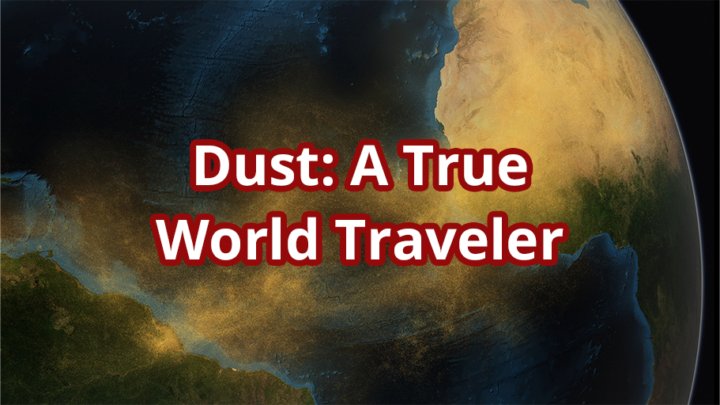


How far can dust travel? Where does it come from? Explore the answers to these questions and make a model of how dust affects sky visibility in Dust a True World Traveler.
Explore how snowmelt becomes water and do a cool experiment to find out how much water snow leaves behind when it melts.
Find out what it takes to be a space photographer on the International Space Station (ISS), play a data detective game and build your landform recognition skills like an astronaut.
Explore how wildfire smoke travels in our sky and find out how NASA satellites track it in "Smoky Skies and Satellites." Plus, create your own data visualization.
Learn all about how satellites track storms – from formation, landfall, and the aftermath
Explore the shore with EO Kids' Barrier Islands: Sands & Lands in Motion. Learn about Earth’s changing shorelines, especially barrier islands.
Building sand castles is a summer pastime, whether in a sandbox or at the beach. Nature builds with sand, too, using wind to create different shapes.
EO Kids is discovering more about Earth’s ozone layer and about what happens when it gets damaged. Plus, create your own ozone hole map in our “Data Viz” activity: “Mapping Ozone.”
Find out about sea ice and its effects on ecosystems and global climate by looking at how and when it forms on Earth. Plus, learn how different types of water freeze in our “DIY Science” activity: “Saltwater is Cool (Literally).”
Did you know that satellites can be used to find penguin populations by looking at what they leave behind? EO Kids is discovering more about penguins by looking at their poop from space.
All those sparkly lights reveal a lot about where and how people live on Earth – everything from population, to disaster recovery, to where people are celebrating.
Farmers use a number of different methods to irrigate crops, and some of them result in pretty interesting shapes.
Take a breath of fresh air. Learn how the air we breathe has become cleaner in the latest issue of EO Kids, Cleaning Up Our Air
Satellites observe and track fires (and what they leave behind) across the world.
Find out what three NASA scientists wanted to be when they were young and discover what they do now. Then, be a scientist yourself, right now!
Explore Earth's different orbits, then race your friends in a scale model of high, mid and low Earth orbits.
EO Kids is seeing green! Can people really change the color of our planet? Find out how Earth is greening up from forests and farms and how NASA can see our greener Earth from space.
The seasons are changing–be it winter to spring, or summer to fall. Learn more about this change and how it’s all about that tilt.
In this issue EO Kids explores water all over Earth, from glaciers to groundwater.
Explore a shrinking glacier in Alaska from space and make your own "mountain" glacier.
Find out how scientists see different rock types with the help of satellites and solve the mystery of how rock layers move to make cool rock formations.
EO Kids is searching for small specks of air pollutants from space. How clean is our air?
EO Kids is investigating how similar snow and clouds look from space. In this issue, discover how satellites measure light to help scientists know which is which.
EO Kids is blasting into the sky and following the trails of volcanic plumes as they travel across the globe.
EO Kids is exploring the muddy waters of the Mississippi Delta from space.
EO Kids is exploring our green Earth. Discover how satellites help us look at plant health all over our planet.
EO Kids is exploring the history of viewing Earth from space – from Explorer 1 to our modern constellation of satellites.
Explore this “cool” topic and discover how NASA scientists use satellites to study these frozen features from space.
"Dig in" and find out how different types of sensors on satellites are used to uncover past civilizations.
Explore the swirling seas of phytoplankton blooms and create your own NASA science visualization.
When can landslides happen? What can trigger a landslide? How is NASA using satellite data to find and prepare for potential landslides?
What makes an urban heat island? Why is New York City a "hot" town? Where are the hottest places on Earth? How can NASA scientists help city planners turn down the heat?